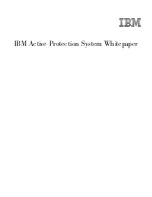
memory
The printer, like a computer, has a memory. When you print a file
from a computer, the contents of the file are transferred quickly
from the computer’s memory to the printer’s memory. The printer
then prints information from its
own
memory at a much slower rate.
This way of printing frees the computer to do other work while the
printer is still working. The printer memory is sometimes called the
buffer memory or input buffer.
micro-adjustment
A feature that adjusts the paper loading and short tear-off positions
by the smallest possible increments.
number systems
Three number systems are commonly used with printers:
decimal
is base 10 and uses the digits 0, 1, 2, 3, 4, 5, 6, 7, 8, and 9.
(This is the most familiar system.)
hexadecimal
(hex) is base 16 and uses the digits 0, 1, 2, 3, 4, 5, 6, 7,
8, 9, A, B, C, D, E, and F. This is frequently used by programmers.
Any decimal number between 0 and 255 can be expressed by a
two-digit hex number.
binary
is base 2 and uses only the digits 0 and 1. All information
in computer systems is handled in binary form represented by
electrical signals that are on or off. A binary digit is often called a
bit; any decimal number between 0 and 255 can be expressed by
an eight-bit binary number.
on line
When the printer is on line, it is able to communicate with the
computer connected to it.
paper bail
The part of the printer that holds the paper against the platen.
6
Glossary
Summary of Contents for LQ-860 - Impact Printer
Page 1: ...User s Manual EPSON 4 0 0 8 1 2 3 6 0 1 0 3 ...
Page 2: ...E P S O N L Q 8 6 0 User s Manual ...
Page 197: ...8 Close the printer cover and the paper guide cover 6 8 Maintenance ...
Page 299: ...Appendix Proportional Width Table A 2 Character Tables A 6 A l ...
Page 305: ......
Page 322: ......
Page 324: ......















































